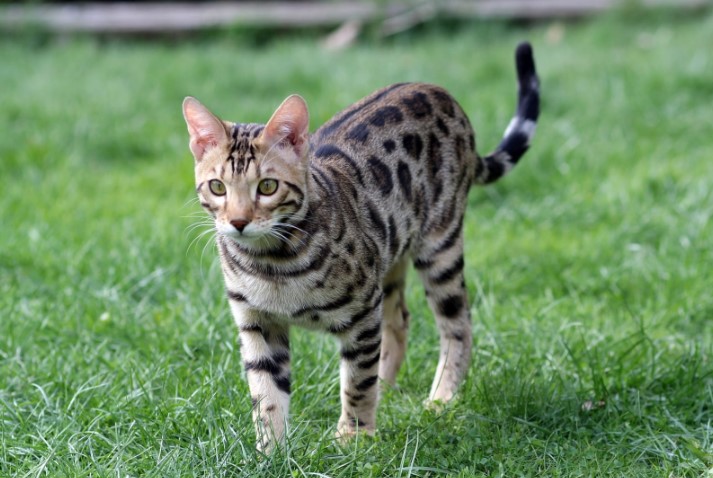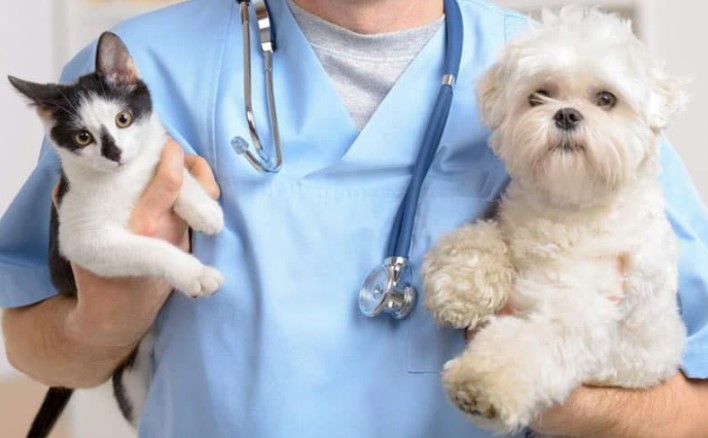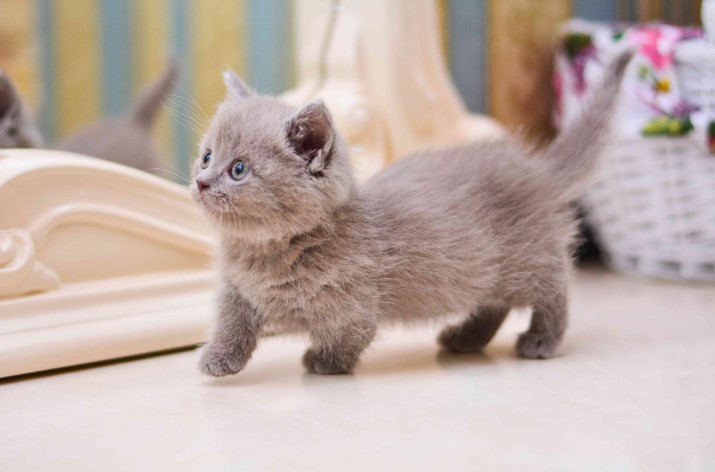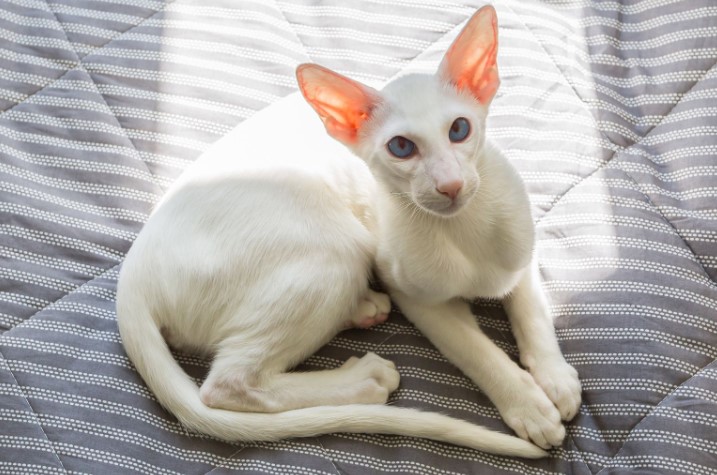
Ocicat Cat Breed
Introduction
Overview of the Ocicat
The Ocicat is a captivating cat breed known for its wild appearance, reminiscent of the ocelot, yet it possesses the temperament of a domestic cat. This breed, with its distinctive spots and robust physique, has garnered a dedicated following among cat enthusiasts. The Ocicat’s striking looks combined with its affectionate nature make it a standout choice for pet lovers seeking a unique yet manageable feline companion.
History and Origins
The Ocicat originated in the United States in the 1960s through a serendipitous crossbreeding of Abyssinian, Siamese, and American Shorthair cats. The breed’s inception was not initially aimed at creating a wild-looking cat, but the result was a cat with a striking resemblance to wild felines, specifically the ocelot, which inspired the name “Ocicat.” The breed has since evolved, gaining recognition from major cat associations worldwide.
Importance of the Breed
The Ocicat’s significance extends beyond its aesthetic appeal. It represents a successful blend of various cat breeds, showcasing the potential of selective breeding to enhance desired traits while maintaining genetic health. The Ocicat has also contributed to the appreciation of hybrid vigor in domestic cats, promoting healthier and more robust feline populations.
Physical Characteristics
Size and Build
Ocicats are medium to large-sized cats with a muscular and athletic build. They typically weigh between 6 to 15 pounds, with males generally being larger than females. Their bodies are long and graceful, supported by sturdy, well-proportioned legs, and finished with a tapered tail that enhances their sleek appearance.
Coat and Colors
The Ocicat’s coat is short, smooth, and satiny, requiring minimal grooming. It features a unique spotted pattern reminiscent of wild cats. The spots are distributed evenly across the body, varying in size and shape, and come in a variety of colors including tawny, chocolate, cinnamon, blue, lavender, and fawn. Each color variant is further enhanced by contrasting markings, making each Ocicat’s coat distinctively beautiful.
Distinctive Features
Beyond their spotted coats, Ocicats are known for their almond-shaped eyes that exude intelligence and curiosity. Their ears are moderately large with a slight forward tilt, adding to their alert and inquisitive look. The combination of their physical traits contributes to their wild yet endearing appearance, setting them apart from other domesticated cat breeds.
Personality and Temperament
General Behavior
Ocicats are known for their friendly and outgoing nature. They are highly social animals that thrive on interaction with their human companions. These cats are intelligent, curious, and playful, making them engaging pets that enjoy participating in household activities.
Interaction with Humans
Ocicats form strong bonds with their owners, often following them around the house and seeking constant companionship. They are known to be affectionate and enjoy being involved in family routines. Their sociable nature makes them great pets for families, including those with children.
Interaction with Other Pets
Ocicats generally get along well with other pets, including dogs and other cats. Their playful and non-aggressive demeanor allows them to adapt easily to multi-pet households. Proper introduction and socialization are key to ensuring harmonious relationships between Ocicats and other animals.
Health and Lifespan
Common Health Issues
Ocicats are generally healthy cats, but like all breeds, they are susceptible to certain health conditions. These can include periodontal disease, hypertrophic cardiomyopathy (a form of heart disease), and renal or liver issues. Regular veterinary check-ups are essential to catch and manage any health problems early.
Lifespan Expectancy
With proper care, Ocicats typically live between 12 to 18 years. A balanced diet, regular exercise, and routine veterinary care contribute significantly to their longevity and quality of life.
Genetic Concerns
While Ocicats benefit from hybrid vigor, some genetic concerns do exist. Responsible breeders perform genetic testing to ensure they are not passing on hereditary conditions. Potential owners should inquire about the health history of the kitten’s parents to understand any potential risks.
Care and Maintenance
Grooming Needs
Ocicats have low grooming needs due to their short, smooth coat. Weekly brushing is usually sufficient to keep their coat in good condition and reduce shedding. Regular dental care, including brushing their teeth and providing dental treats, helps prevent periodontal disease.
Diet and Nutrition
A high-quality, balanced diet is essential for maintaining an Ocicat’s health. Owners should provide a diet rich in protein and appropriate for the cat’s age, weight, and activity level. Fresh water should always be available, and treats should be given in moderation to prevent obesity.
Exercise Requirements
Ocicats are active and playful, requiring regular exercise to stay healthy and happy. Interactive toys, climbing trees, and opportunities for running and jumping are important. Engaging in playtime with their owners also helps to strengthen the bond and provide mental stimulation.
Training and Socialization
Training Techniques
Ocicats are intelligent and can be trained to perform various tricks and commands. Positive reinforcement techniques, such as treats and praise, work best. Training sessions should be short and fun to keep the cat engaged and willing to learn.
Socialization Tips
Early socialization is crucial for Ocicats. Exposing them to different people, environments, and experiences helps them become well-adjusted adults. Kittens should be handled gently and exposed to various household noises and activities to build their confidence.
Handling Behavioral Issues
Behavioral issues in Ocicats are relatively rare but can include problems like scratching furniture or inappropriate urination. Providing scratching posts, maintaining a clean litter box, and using deterrents like double-sided tape on furniture can help manage these behaviors. Consistency and patience are key to addressing any issues that arise.
Breeding and Genetics
Breeding Practices
Responsible breeding practices are essential to maintain the health and quality of the Ocicat breed. Breeders should prioritize genetic testing, provide proper care for breeding cats, and ensure that kittens are raised in a healthy environment. Ethical breeders aim to enhance positive traits while minimizing health risks.
Genetic Diversity
Maintaining genetic diversity is important to prevent hereditary health issues. Responsible breeders avoid inbreeding and select mates that contribute to the genetic pool’s diversity. This practice helps ensure the long-term health and vitality of the breed.
Choosing a Breeder
Prospective Ocicat owners should choose a breeder with a good reputation and a commitment to the breed’s health and well-being. Visiting the breeder’s facility, meeting the kittens’ parents, and asking about health screenings are crucial steps in selecting a reputable breeder.
Living Environment
Ideal Living Conditions
Ocicats adapt well to various living environments, from apartments to large homes. They require a stimulating environment with plenty of toys, climbing structures, and opportunities for exploration. A safe and comfortable living space contributes to their overall well-being.
Indoor vs. Outdoor Living
While Ocicats can be adventurous, it is generally safer for them to live indoors to avoid risks like traffic, predators, and diseases. If allowed outdoors, they should be supervised or provided with a secure, enclosed outdoor space to ensure their safety.
Adapting to New Environments
Ocicats are relatively adaptable and can adjust to new environments with proper preparation. Introducing them gradually to new spaces and providing familiar items, such as their bed or toys, can help ease the transition. Patience and reassurance from their owners are key during this period.
Cost and Budget
Initial Purchase Price
The cost of purchasing an Ocicat can vary widely based on factors such as breeder reputation, pedigree, and location. Prices typically range from $500 to $1,500. It is important to buy from a reputable breeder to ensure the health and quality of the kitten.
Ongoing Costs
Ongoing costs for owning an Ocicat include food, litter, toys, grooming supplies, and regular veterinary care. Pet insurance is also a consideration to help manage unexpected medical expenses. Budgeting for these costs ensures the cat’s needs are consistently met.
Budgeting Tips
Prospective owners should plan and budget for both initial and ongoing expenses. Setting aside a monthly amount for veterinary care, emergencies, and other essentials can help manage the financial responsibilities of owning an Ocicat. Additionally, investing in quality food and preventive care can reduce long-term costs by promoting overall health.
Activities and Play
Favorite Toys
Ocicats enjoy a variety of toys that stimulate their hunting instincts, such as feather wands, laser pointers, and interactive puzzle toys. Rotating toys regularly keeps them engaged and prevents boredom.
Mental Stimulation
Mental stimulation is vital for Ocicats due to their high intelligence. Puzzle feeders, training sessions, and interactive play provide the necessary mental challenges. Providing vertical spaces like cat trees and shelves also encourages exploration and mental engagement.
Physical Activities
Regular physical activity is crucial for maintaining an Ocicat’s health and preventing obesity. Interactive play sessions with their owners, opportunities for climbing and jumping, and access to safe outdoor enclosures help meet their exercise needs.
Historical Context
Evolution of the Breed
The Ocicat’s evolution began in the 1960s with the goal of creating a cat that resembled a wild feline but had a domestic temperament. The breed’s development involved careful selection and breeding of Abyssinian, Siamese, and American Shorthair cats, resulting in the unique Ocicat we know today.
Notable Ocicats in History
Several Ocicats have made their mark in history, especially in the show circuit. Their striking appearance and friendly nature have earned them numerous awards and recognition in cat shows globally. Their presence has also helped increase the breed’s popularity among cat enthusiasts.
Recognition by Cat Associations
The Ocicat is recognized by major cat associations, including the Cat Fanciers’ Association (CFA), The International Cat Association (TICA), and others. These organizations have established breed standards that outline the ideal physical and behavioral traits of the Ocicat.
Cultural Impact
Ocicat in Media
The Ocicat’s exotic appearance has made it a popular choice in media, often featured in advertisements, television shows, and films. Their unique look and charming personality make them stand out in various forms of media representation.
Famous Owners
Several celebrities and notable figures have owned Ocicats, contributing to the breed’s popularity. Their presence in the homes of well-known individuals has helped raise awareness and appreciation for the breed.
Cultural Significance
The Ocicat holds cultural significance as a symbol of the successful blending of wild aesthetics with domestic traits. This breed showcases the beauty and diversity achievable through careful and ethical breeding practices.
Adoption and Rescue
Adoption Process
Adopting an Ocicat involves several steps, including finding a reputable rescue organization or breeder, completing an application, and undergoing a screening process. Prospective owners should be prepared to provide information about their living situation and experience with pets.
Rescue Organizations
Various rescue organizations specialize in Ocicat and other cat breeds. These organizations work to find loving homes for cats in need and often provide support and resources for new owners. Adopting from a rescue helps give a second chance to a cat in need.
Benefits of Adoption
Adopting an Ocicat from a rescue organization can be a rewarding experience. It provides a loving home to a cat in need and can be more affordable than purchasing from a breeder. Rescue cats are often already spayed/neutered and vaccinated, reducing initial veterinary costs.
Common Myths and Misconceptions
Myth vs. Reality
One common myth about Ocicats is that they are wild and unmanageable due to their appearance. In reality, Ocicats are domesticated and have a friendly, playful temperament. Another misconception is that they require extensive grooming, but their short coats are low-maintenance.
Addressing Misconceptions
Educating prospective owners about the true nature of Ocicats helps dispel myths and misconceptions. Providing accurate information about their care, behavior, and needs ensures that owners are well-prepared and can provide a suitable home.
Traveling with an Ocicat
Preparation for Travel
Preparing an Ocicat for travel involves familiarizing them with their carrier, ensuring they have identification, and packing essentials like food, water, and litter. Gradual exposure to car rides can help reduce anxiety.
Travel Safety Tips
During travel, it is important to keep the Ocicat secure in a carrier to prevent accidents and escape. Regular breaks for feeding, watering, and allowing the cat to use the litter box are essential on long trips. Microchipping and having up-to-date identification tags increase the chances of a safe return if the cat gets lost.
Managing Travel Anxiety
To manage travel anxiety, owners can use calming aids like pheromone sprays, herbal supplements, or prescription medications if necessary. Keeping the cat’s environment as familiar as possible and maintaining a calm demeanor can also help reduce stress.
Legal and Ethical Considerations
Legal Requirements
Owning an Ocicat may involve legal requirements such as registration, vaccination, and adherence to local pet ownership laws. Prospective owners should familiarize themselves with these regulations to ensure compliance.
Ethical Breeding Practices
Ethical breeding practices are essential to maintaining the health and welfare of Ocicats. Breeders should prioritize the well-being of their cats, avoid inbreeding, and conduct genetic testing to prevent hereditary diseases. Transparency with buyers about the cat’s health and lineage is also crucial.
Ownership Responsibilities
Owning an Ocicat comes with responsibilities, including providing proper care, nutrition, and medical attention. Owners should be committed to the lifelong care of their cat and be prepared for the time, effort
and financial resources required to meet their needs. Additionally, responsible ownership involves ensuring the cat’s safety and well-being, complying with legal regulations, and being mindful of the impact of pet ownership on the surrounding community and environment.
Future of the Breed
Current Trends
The popularity of Ocicats continues to rise, driven by their distinctive appearance and friendly demeanor. Breeders are working to refine and enhance the breed while maintaining its unique characteristics, resulting in increased demand for Ocicats worldwide.
Future Developments
The future of the Ocicat breed looks promising, with ongoing efforts to improve genetic diversity, health, and temperament. Advances in veterinary medicine and breeding practices will likely contribute to further enhancing the breed’s overall well-being and longevity.
Preservation Efforts
Preserving the Ocicat breed involves collaboration among breeders, veterinarians, and cat enthusiasts to ensure responsible breeding practices and promote awareness of the breed’s history and characteristics. Conservation efforts aim to maintain the Ocicat’s status as a beloved and healthy breed for future generations to enjoy.
Conclusion
In conclusion, the Ocicat is a remarkable breed with a fascinating history, distinctive appearance, and affectionate temperament. From its origins as a serendipitous hybrid to its current status as a beloved companion animal, the Ocicat continues to captivate cat enthusiasts worldwide. Understanding the breed’s unique characteristics, care requirements, and cultural significance is essential for prospective owners and admirers alike. By promoting responsible ownership, ethical breeding practices, and preservation efforts, we can ensure that the Ocicat remains a cherished breed for generations to come.
You May Also Like

Essential Tips for Choosing the Right Veterinary Clinic for Your Pet
February 14, 2024
Munchkin Cat Breed
November 26, 2023
